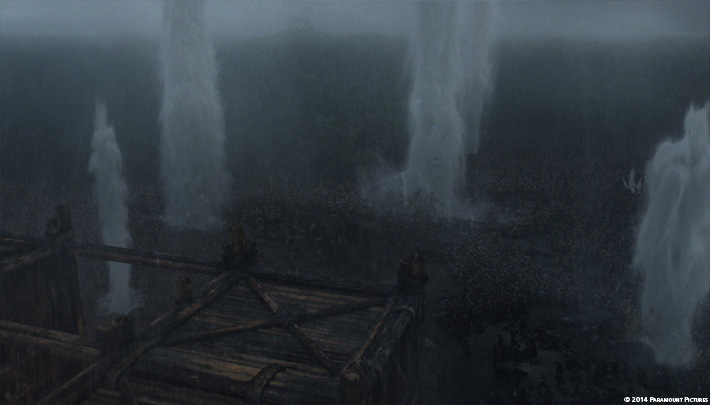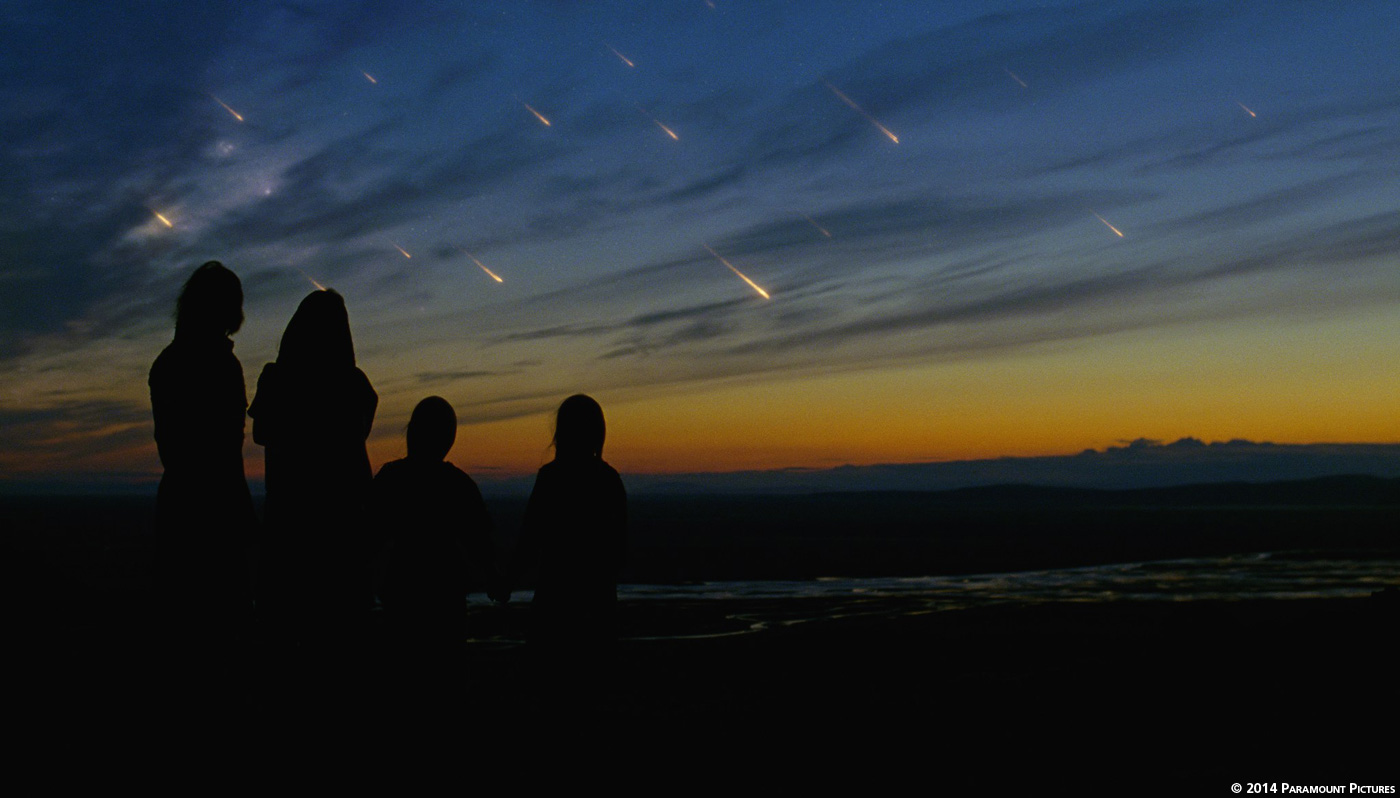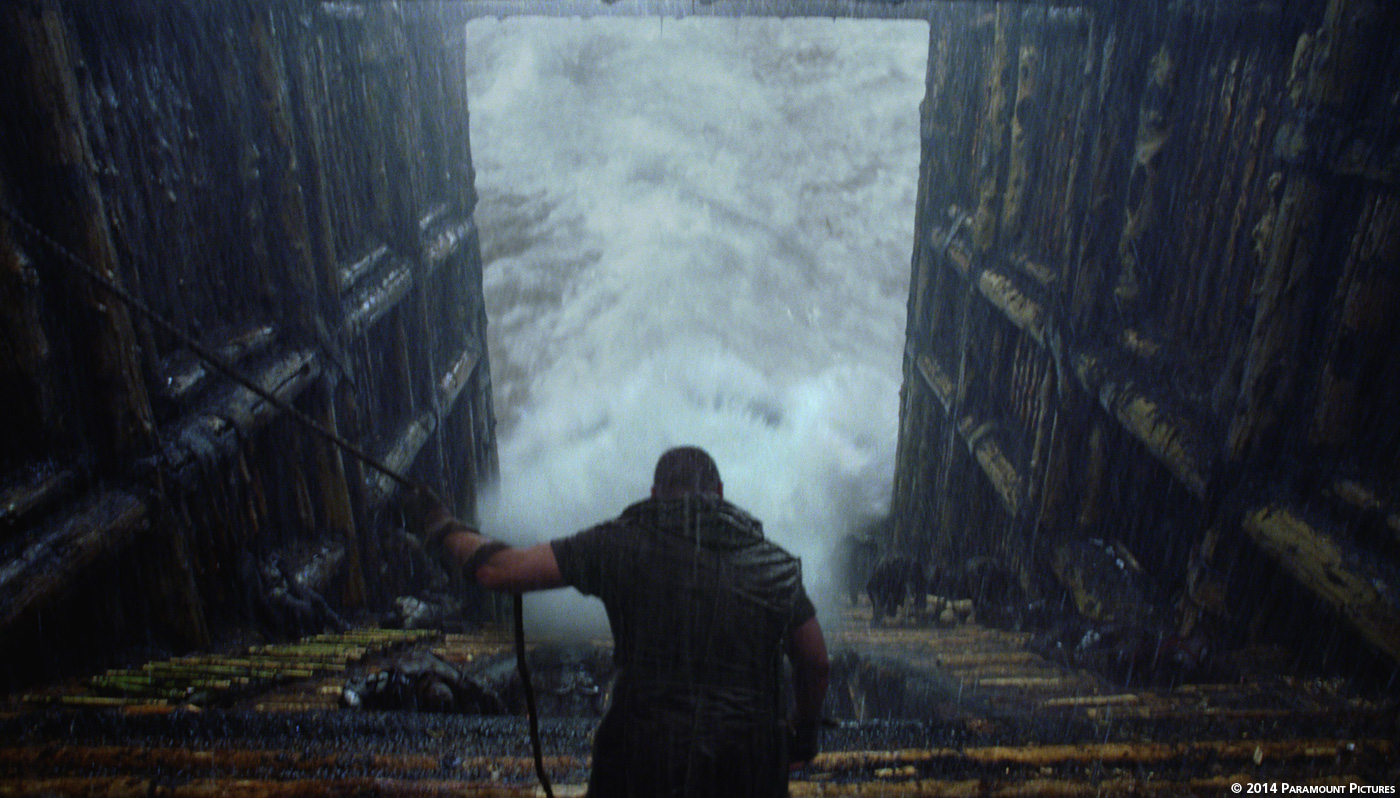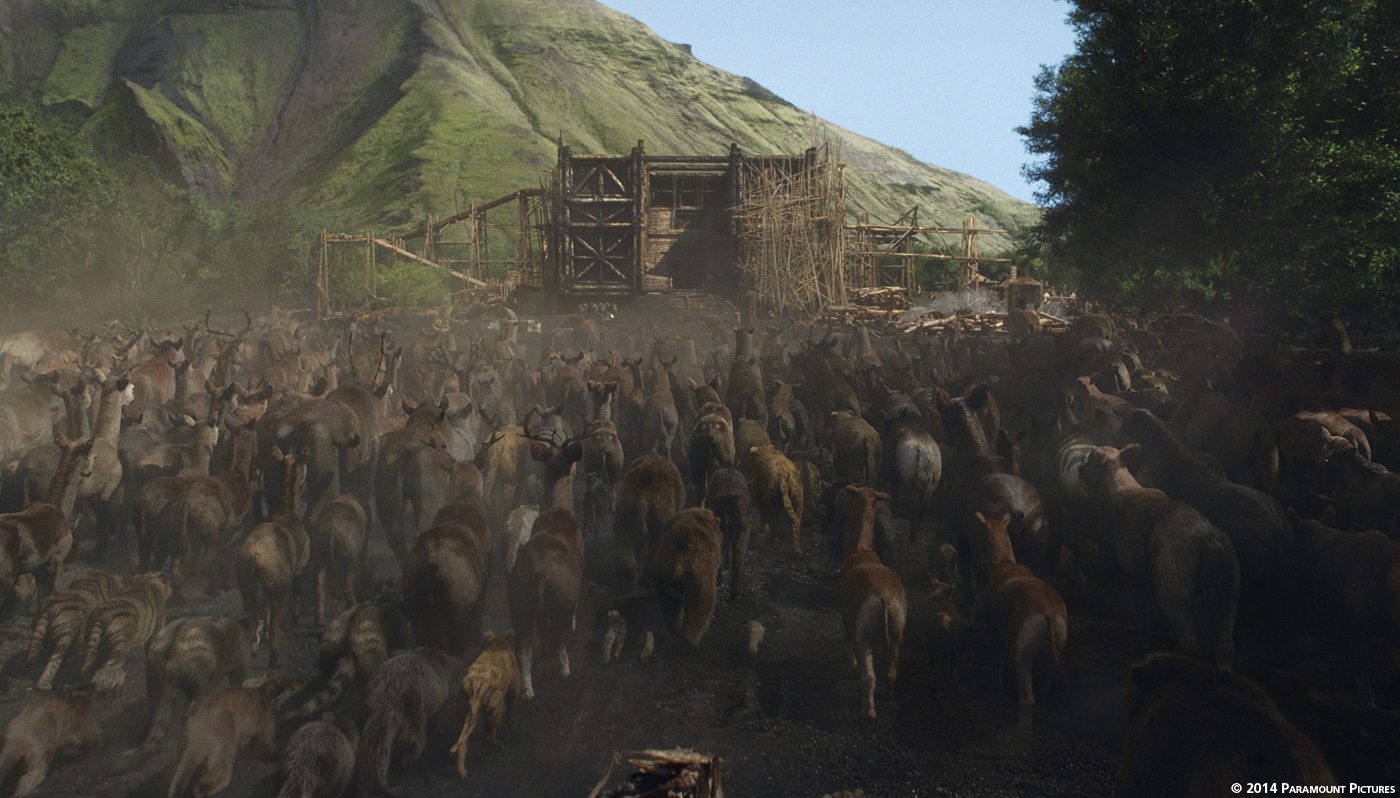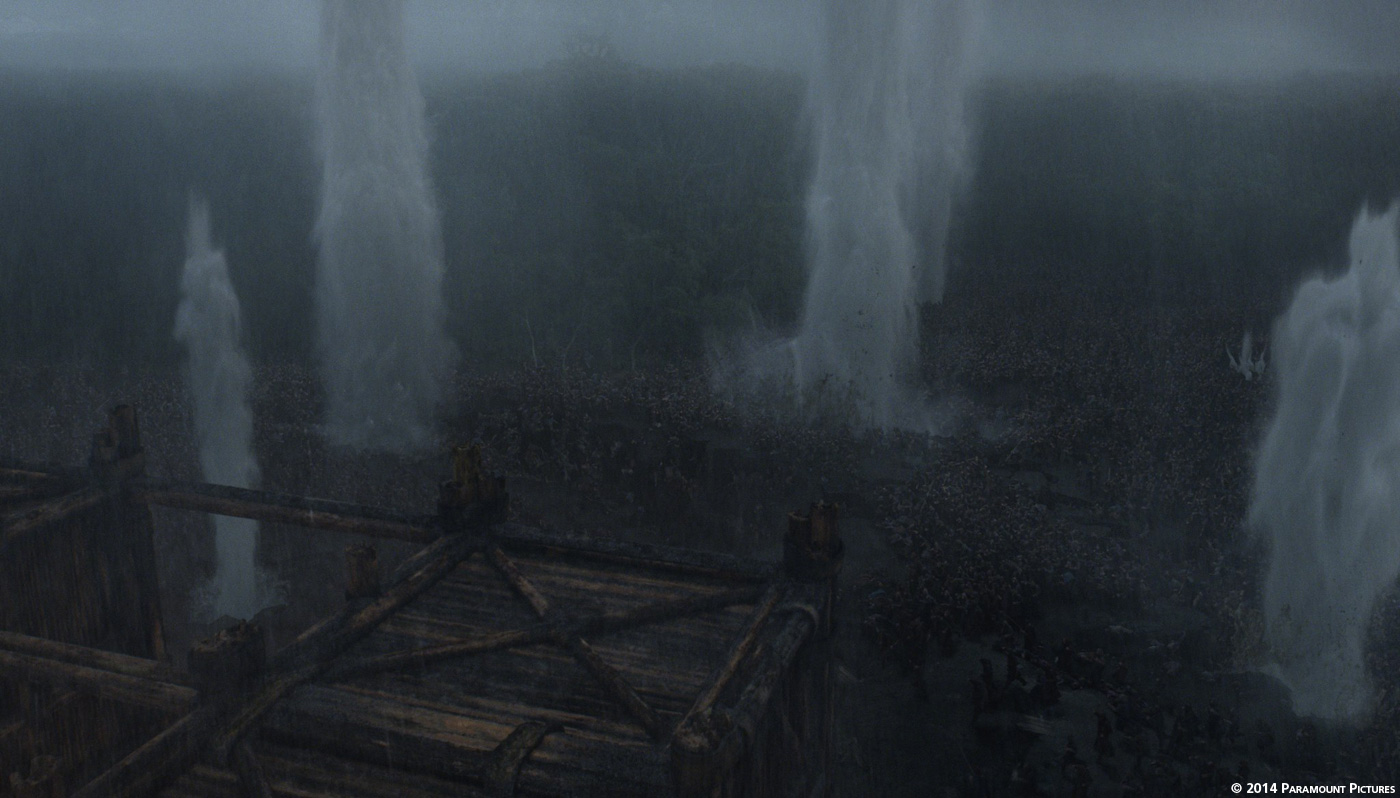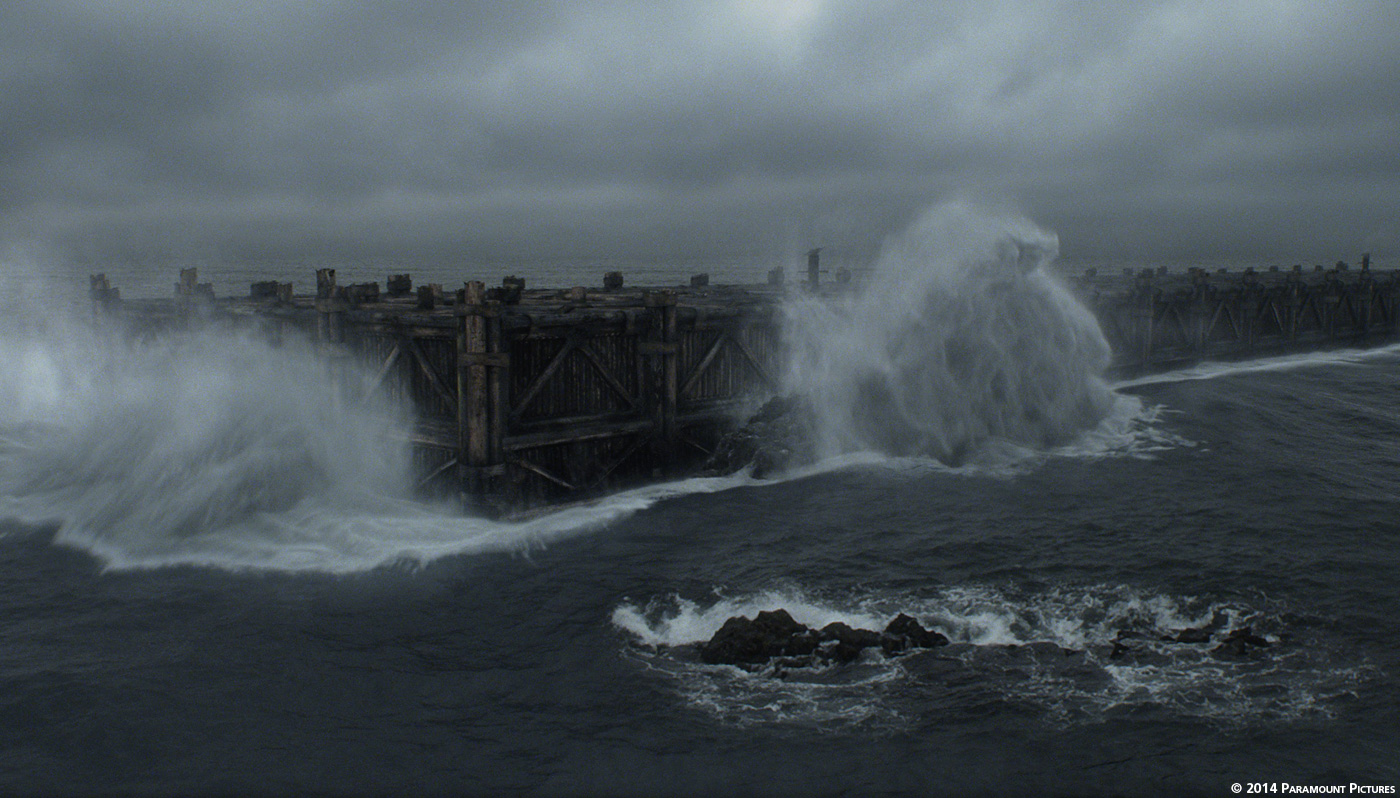Philippe Rebours began his career in visual effects at BUF on THE CITY OF LOST CHILDREN. He then joined Industrial Light & Magic in 1998 and worked on films such as STAR WARS: EPISODE I – THE PHANTOM MENACE, MINORITY REPORT, IRON MAN or AVATAR.
What is your background?
I graduated from L’Ecole Centrale de Lyon in France, receiving the equivalent of a Bachelor of Science degree in Engineering with a focus on Computer Science. I then worked in Research and Development at Buf Compagnie in Paris before coming to Industrial Light & Magic in 1998.
This is your first collaboration with director Darren Aronofsky. Can you tell us how it came about?
Back in September 2011, Darren came to ILM to check out the latest advent in performance capture technology and check out our performance capture stage. He was interested in seeing what we could do to help him prepare for his upcoming shoot. Three of us performed the roles of the Watchers, even going so far as to learn the lines from the script. Ben Snow, the overall VFX supervisor on NOAH demonstrated how we could create a virtual coverage of the scene, based on the height of the Watchers. We rendered the sequence from all the cameras that Darren had covered and sent them to him in New York where he used them to create a cut sequence which I believe he showed the studio to help convey what his vision was.
That was the first time I met Darren. Once the movie was awarded to ILM, I came on board as Associate Visual Effects Supervisor.
What have you done on this show?
ILM was the lead house on the film and was responsible for the Watchers, the ark shots, the dream sequences, the battle sequence, the creation sequence, the mammal and reptile arrivals and the creation sequence to name just a few.
ILM’s Ben Snow was the overall Visual Effects Supervisor on the film. When he was on set, I would supervise the team here in San Francisco. Once he returned, my role was to supervise our team at ILM Singapore where we did the arrival of the reptiles, some shots with the watchers in front of the ark, and the hound beast sequence. I was also working on a couple of sequences here, like the Forest Growth sequence, the confrontation between Tubal Cain and Noah, and some of the babies’ shots.
Can you describe one of your typical day on-set and then during the post?
During post, we typically start with dailies where we project what has been rendered overnight and provide feedback to the artists. We then get together in small groups to talk about how to solve specific problems, or how to achieve a specific effect. Typically, there’s also a meeting where we look at where we are in the production schedule, which shots needs to be turned over to artists and which shots are close to being finaled. During the day, artists send review requests to the supes or drop by to get feedback on a shot that they just ran. By the end of the day, they will be nightlies where we project shots that we didn’t have time to give feedback on or shots that could be finalized.
After that, we hold a second nightlies for shots run in Singapore so we can provide feedback to artists that are working there as well.
What indications and references did you received for The Watchers?
A fair amount of exploratory artwork was done before we started on the film. Lots of them were giants with 6 arms, not necessarily made of stone. Mainly, Darren had Sam Messer create a sculpture that represented Og. We took plenty of photographs of it, and it was sent to ILM for reference. Aaron McBride, our Visual Effects Art Director, and his team used it as a starting point to create artwork concepts and variations on the Watchers.
The Watchers have a Harryhausenesque feeling. How did you approach their animation?
They are very heavy and quite tall and Darren wanted to have them moving fairly slowly. In the story they have been abandoned by the creator and are both mentally and physically hurt. As reference we looked at a lot of video of people with a variety of physical disabilities – Someone who lost the use of his or her legs for example. Darren wanted a specific stutter to the Watcher’s movement.
There is a beautiful shot in which a forest is growing fast. How did you created it?
We have been rendering trees for a while, using Speedtree quite often. But the software didn’t have any system to animate them growing. So we contacted Speedtree developers, IDV, and contracted them to add a growth system to the package that we could work with. Our artist, Jerome Platteaux created a library of trees that would grow out of the ground. He used 3dStudio Max to populate them and animate their timing. He then used VRay to render the shots.
Have you developed a specific pipeline for the animals and especially for the fur?
For the mammals, we created a chart with all the animal types we wanted to build and most of them were extinct animals, like the entelodont or the marsupial-diprotodon. For each animal, our modeler supervisor Jung-Seung Hong would categorize them by body type – shape of head, number of feet, length of tail, etc. From this chart we created an intelligent system that we referred to as the Zoo Model Kit that had a number of body types, neck types, head types, etc. – Each piece got rigged, had UV layouts created and even had a primary set of textures and guide splines for the fur.
By assembling creatures with this system we could create a variety of different animals very quickly. They would then been sculpted and textured. It was still a lot of work as we had to develop the look of every single variation but it was a great starting point. We followed the same philosophy for the reptiles, although they didn’t have as many variations.
How have you animated so many animals?
For the mammal arrival shots, we used Massive and a crowd pipeline, after having key frame animated some various cycles : walking, sitting and laying down, sleeping, etc. The simulations was quite complex as we had to be sure that the animals would be walking by in pairs, though not always exactly next to each other, but close. Also, the animals many different sizes, some are as small as 1.5 feet long, others are up to 20 feet long.
Once the overall simulation was done, our animators would go in and hand-animate some of them. For example, in the shot where the camera pulls back inside the ark as the animals go to sleep, there’s about 3500 of them, 130 were hand animated after the initial simulation pass was completed.
For the reptile shots, everything was hand animated.
The Flood is really impressive. Can you explain in details about its creation?
Our FX lead, Raul Essig, first did a very low resolution simulation of the flood so we could time it and be sure that it was working from shot to shot. Once the cut was locked, each shot was worked on separately, re doing the simulation with greater levels of detail as needed. It’s not just about the water though, the trees are getting ripped out of the earth by the force, the ground is breaking, falling apart, the crowds are running, tripping and falling down into gaping holes in the ground, geysers of water are jetting out of earth. Many, many artists worked on those elements that all had to be coordinated by our amazing production team.
What was the biggest challenge on this project and how did you achieve it?
The diversity of the work was a real challenge on this film. Huge destruction with the flood sequence, creating enormous numbers of unique animals for the arrival sequence, the battle sequence, with a ton of intense rotoscoping to add the army behind the real 400 extras shot under the SFX rain, the creation sequence with this timelapse look to it – They all brought different problems that had to be solved. Fortunately we have an amazing technical team and a lot of very talented artists. Each challenge was tackled by a small group of people who would brainstorm together to come up with the best solution.
Have you split the work amongst the various ILM offices?
The work was split between our San Francisco and Singapore studios.
What do you keep from this experience?
It was great to be able to see how Darren works, his creative process, how he brings his vision to the screen.
How long have you worked on this film?
I started working on it in June 2012, until December 2013.
How many shots have you done?
ILM did around 380 shots.
What was the size of your team?
Around 160 people in San Francisco and 75 in Singapore.
What is your next project?
AVENGERS: AGE OF ULTRON.
What are the four movies that gave you the passion for cinema?
STAR WARS
E.T. THE EXTRA-TERRESTRIAL
BLADE RUNNER
CHARLIE CHAPLIN’S MOVIES
Z
VINCENT, FRANCOIS, PAUL AND THE OTHERS
THE TALL BLOND MAN WITH ONE BLACK SHOE
PARDON MON AFFAIRE
I suppose I should stop here…
That’s four isn’t it?
A big thanks for your time.
// WANT TO KNOW MORE?
– Industrial Light & Magic: Official website of ILM.
© Vincent Frei – The Art of VFX – 2014

